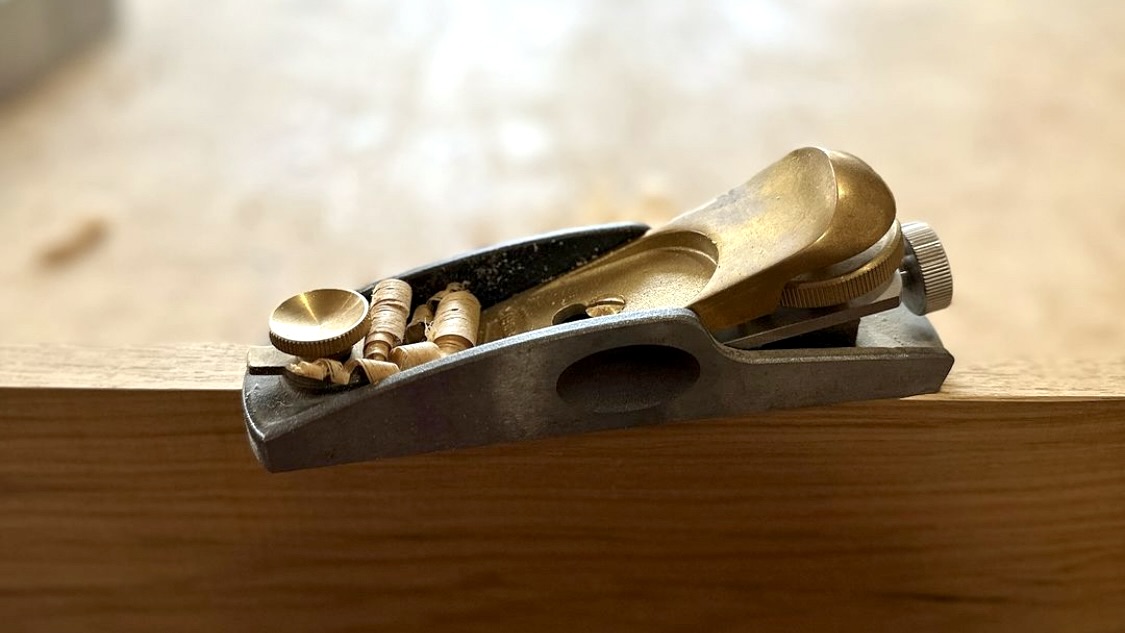The Block Plane - A Versatile Tool
Posted by Vic Tesolin on 12th Apr 2024

A well-worn block plane is like a pair of comfortable shoes
A block plane is a super handy tool for many different woodworking tasks. It's like the Swiss Army knife of woodworking but without the tweezers and toothpick.
One of the most common uses for a block plane is chamfering. Chamfering is when you create a bevelled edge on a piece of wood. This is often done to give the wood a finished look and to make it more visually appealing. With a block plane, you can quickly and easily create a chamfered edge that catches the light and adds character to your project. It’s as simple as holding the plane at around 45° and making a flat detail on the corner.
A close cousin to the chamfer is the round-over. It’s essential to ease the edges of your work with a subtle round-over to make it gentle on the hands touching it. Creating a round-over is similar to a chamfer. The difference is that you don’t stay at 45° but instead change the angle you are working at with every pass. I generally use five passes – three at 45° and one at each 22.5° to soften it up. Following up with a swipe of sandpaper will smooth out any facets.
Another excellent use for a block plane is trimming the end grain of a board. End grain can be challenging because it tends to splinter easily. However, you can cut the end grain with a sharp block plane and create a smooth surface free of machining marks. Just be careful to take only a little off, or you may end up with a shorter board than you intended.
In addition to these more common uses, a block plane can also be used to shape curves in wood. This is where things start to get a little more advanced, but with some practice, you can shape convex curves like a pro. Like any skill with hand planes, try out the techniques on a scrap piece before you attempt it on a project. The key is to maintain a square edge while working around the curve.
Finally, a block plane can be used for flushing tasks like trimming edge banding. Edge banding is a thin strip of wood glued to the edge of plywood to cover up the exposed edge. You can quickly and easily trim the excess edge banding with a block plane, giving your project a polished and finished look.
As you can see, a block plane is versatile and essential in any woodworker's toolbox. Whether you are a beginner or an experienced woodworker, a block plane can help you achieve professional-looking results in your projects. So, if you don't already have one in your toolbox, it's time to get one!
To Understand, you must do - Vic Tesolin

